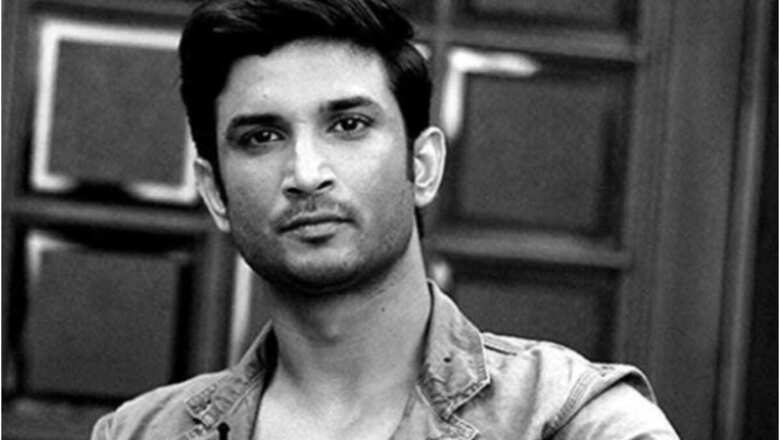
views
Justice is continuing to elude Sushant Singh Rajput. The Mumbai Police has failed miserably, and, allegedly, deliberately, in its investigations. The Bihar Police suddenly shot to fame for its proactive landing in Mumbai and investigating. The people witnessed its indigenous republic twisting the destiny of many by scripting its own search for justice: convicting Karan Johars to Khans to Tapsees to Swaras, and then to Bhatts and Akhtars, and indulging the people, providing much-needed distraction.
Away from these front groups of different political parties, there were, thankfully, investigative journalists who kept the issue alive. But, surreptitiously, a new normal has been set. The central government can now get the case referred to CBI by registering FIR through another friendly state government; another federal principle conceded. The Tryst-with-Destiny’s Republic of India would know its impact when this precedent would be misused.
In the meantime, our country, as usual, ignored that another of its four children died by suicide. A 13-year-old in Chhattisgarh (June 24), a 12-year-old in Uttar Pradesh (June 20), a 10-year-old in Siliguri, West Bengal (June 19) and a 15-year-old girl in Andaman and Nicobar Islands (July 17) -- all of whom were reportedly fans of Sushant. Some of them left notes on how much they loved Sushant.
What is worrying is that these teenage suicide deaths are not unsettling our policy makers or the media. The largest democracy in the world should be worried about its young citizens getting addicted to the superhero culture. The Indian mind captivated by a superhero and searching for the same, basic parochial identity, skills, caste, gender, religion or sexuality is not a new thing. What is new is that it is becoming an unchallenged normal. The new normal would not only not allow, but would even challenge the Indian mind to link child-suicides to superhero culture, for the grammar of power itself is becoming dictatorial and parochial.
Media has ordained many theories around Sushant’s death: Suicide, reasons linking to depression; or to nepotism; or to Rhea’s actions; and also as murder by Rhea or Bollywood mafia or underground mafia or even some politician. But the way discussions happened in social media exposed our current understanding towards suicide, mental health and the social determinants of the mental health. For example, we, on the one hand, look at suicide from a narrow prism of crime devoid of any sociological issue. On the other hand, while reporting crimes, we dramatise them using stereotypical sociological narratives to judge the crimes. These narratives are, often, at the cost of dignity of the death, the dead and those who cared for the dead.
The media was supposed to use the term ‘death by suicide’ not merely to decriminalise suicide but also not to create a sweeping generalisation of suicide being a voluntary immature act. Even many reputed media outlets did not follow the guidelines on reporting. Those who reported with the new term, they probably did not mean the essence of these words. There are two thin lines: one, the difference in acknowledging the act as a mature or immature way of engaging with the situation; and two, the difference between acknowledging and romanticising the agency of the person. These thin lines were often transgressed.
The mental health discourse itself has a long history. The now recovery movement in mental health emphasised the treatability of mental illness through a de-institutionalised community-based recovery system. Its first pillar is to not look at the person living with mental illness as a ‘diagnosis’ category. Each individual is unique, requiring individualised treatment.
I remember, two decades ago, a person stressed with his break-up, would be sneeringly called as “love-failure case”; a person not succeeding in examinations mocked as ‘makku (ignorant)’; a person being harassed repeatedly by the husband called patronisingly as ‘paavam’ (victim of abuse). Some of these persons remain in that state of mind for a prolonged time and also adopt certain behaviours that are termed ‘asocial’. Each scenario had different causes, different kinds and pace of changes in behaviours.
Now, I fear what is happening is bunching all of them in a singular category, with a new labeling. It is important to impress upon the mind of the person that whatever the person is going through is treatable. But, the challenge is to convey that message without the lens of a ‘disease’ of the mind. There may be varying contexts, including among those the four children who died by suicide, which needs an educative debate, say, on how various social determinants such as ideologies of super-heroism, or, for that matter, patriarchy, caste, consumerism or capitalism play the role in advancing trauma.
Family and the community, as the second pillar of the recovery movement, are integral to the recovery model. The challenge is to counter the stereotypes about people living with mental illness. For example, there is reluctance to accept that Sushant was actually living with mental illness because he was said to be talking intelligently, looking happy and was doing social work! Further, it is perceived that accepting his mental illness status would affect the suspicion that he could have been murdered. There is reluctance in accepting that Sushant, even if diagnosed of depression, still could be murdered; or Sushant could have died by suicide because of some other totally different reasons.
The third pillar is professional ethics, that is, the responsibility of medical practitioners in terms of reporting. From the second day of the death, the suspicion of clinical depression and also the medicines he was taking were all over media. The hungry media described various accounts from psychiatrists, ironically protecting the identity of psychiatrists, rather than Sushant! In all this, a clinical psychologist came out in open and disclosed the diagnosis of mental illness of Sushant. She prima facie violated the ethics related to keeping the nature of illness and identity of person confidential. However, the medical fraternity ignored one important aspect. She said she took this decision of disclosing to counter a narrative about Rhea, a caregiver. She felt that it is important for her to speak out. From her lens, it seems, conforming to larger ethics demand breaking of professional ethics.
So, the fourth pillar of the recovery movement is the institution of ‘caregivers’, who are supporting the person in the recovering process. It is an ignored institution. Many times, caregivers face a diverse situation of being unpopular to many people related to the person, and sometimes even to the person living with mental illness. Our guidelines often are not protective of caregivers. Therefore, it was not surprising that the mental health fraternity did not call out irresponsible reporting about a caregiver.
If Rhea were taking care of Sushant, from taking him to the doctor to ensuring he takes medicines, there are inherent challenges that she would have been facing, which are not merely about the consequences of the illness, but also Sushant’s fear of illness getting known to the wider society and the consequent exclusion, I feel her challenges were not presented in a thoughtful way. Instead what was the focus: she used Sushant’s funds for her materialist needs, for starting a company in a joint name, for supporting her own family members, and for separating Sushant from his family. None of these are new accusations against a spouse, female or male, who are living together. If she has violated the money-laundering law, it is a crime independent of the abetment of suicide. Narratives around Rhea were, rather, given a moralistic colour to what are otherwise relationship issues - of son’s partner (Rhea) versus rest, or that of father-son or sister-brother.
How does social media describe these relationship-feuds? For example, identifying Rhea as a ‘Bengalan woman who is materialist and family separator’ countered by a ‘Bihari feudal expectation from sublime son’ narrative! Even those who wanted to contest the stereotype of ‘chaste, obedient, family loving daughter-in-law’, used the location of ‘being Bengalis’ to recreate a stereotype about them as modern, non-patriarchal women vis-à-vis Bihari patriarchy! Don’t all of these perpetuate and nurture stereotypes or wannabe stereotypes?
Sushant did wield power owing to his caste, lineage, wealth and stardom. He is being portrayed as if he was a passive ‘receiver’ of harm from Rhea. Why? Is it because he was living with mental illness or was it because he was under the ‘spell’ of Rhea? Each of these reflects certain ‘isms’, which needs to be understood. Also, isn’t it true that if Rhea were a legally wedded wife, her views would be seen as from a ‘mourning wife’ part of the ‘mourning’ family? Probably a socially sanctioned institution is less questioned than those not sanctioned by the society. Is that not a problem? Standing for justice for Sushant does not mean one needs to compromise on ideological locations. But, whatever the reason for your stand is would surely determine your ideological locations, or rather the other way round. Let your unmindful stand not haunt your politics!



















Comments
0 comment